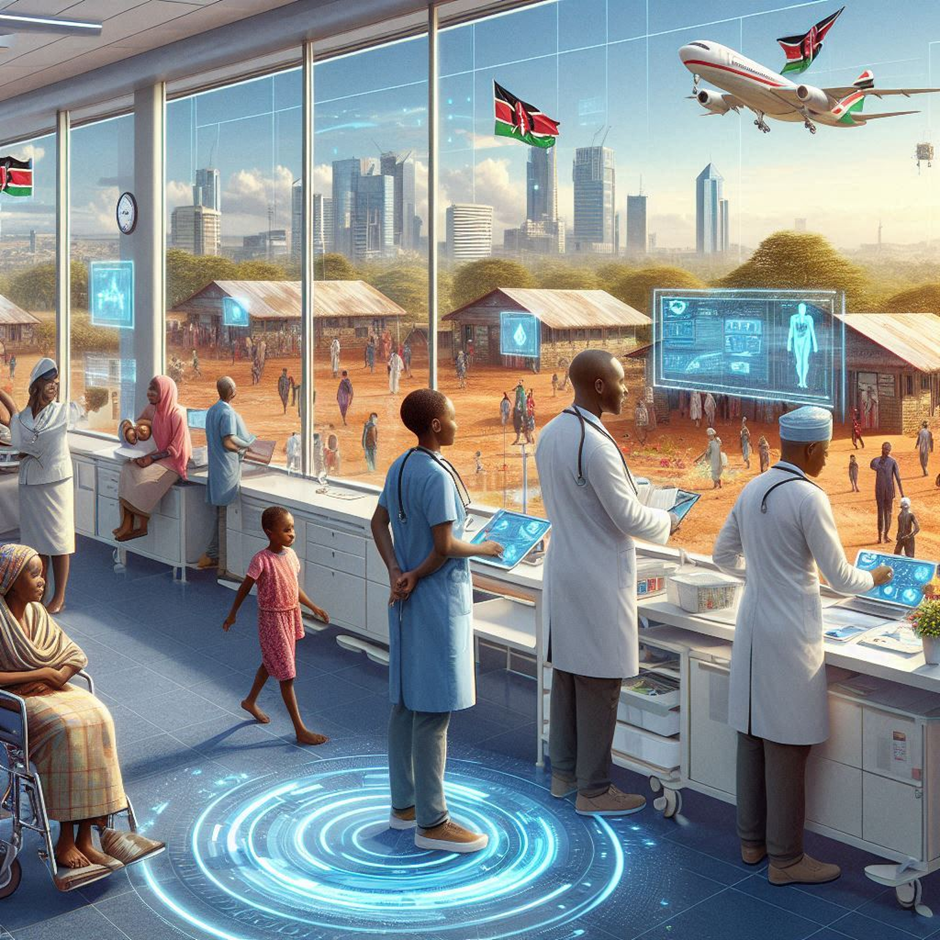
The Future of Healthcare in Kenya: Innovations and Trends for 2025
Introduction

Kenya’s healthcare sector is undergoing a rapid transformation driven by technological advancements, government policies, and increased investments. As the country aims for universal health coverage, innovations such as telemedicine, artificial intelligence (AI), and data-driven healthcare solutions are reshaping the landscape.
In this blog, we will explore key healthcare trends in Kenya for 2025, the innovations driving these changes, and the potential challenges and opportunities that lie ahead.
1. Digital Health and Telemedicine

With increased internet penetration and smartphone usage, telemedicine is becoming a critical part of healthcare access in Kenya. Virtual consultations, remote patient monitoring, and AI-powered diagnosis tools are reducing the burden on hospitals and improving patient outcomes.
Key Trends:
- Expansion of mobile health (mHealth) applications
- Adoption of AI-based diagnostics and chatbots for preliminary health assessments
- Increased investment in virtual healthcare platforms
Challenges:
- Digital divide affecting rural communities
- Cybersecurity and data privacy concerns
Example: Platforms like MyDawa and Sasa Doctor are already providing online consultations and prescription deliveries, making healthcare more accessible to Kenyans.
2. AI and Automation in Healthcare

Artificial Intelligence is transforming how medical professionals diagnose diseases, analyze medical images, and even predict outbreaks. AI-driven solutions are helping reduce misdiagnosis and improve healthcare efficiency.
Key Trends:
- AI-assisted radiology and pathology for faster, more accurate diagnoses
- Predictive analytics for epidemic control and prevention
- Smart chatbots for mental health counseling and basic health inquiries
Challenges:
- High initial costs of AI implementation
- Ethical concerns regarding machine-led diagnoses
Example: IBM’s Watson Health and Google’s DeepMind AI are already supporting medical research and clinical decisions worldwide.
3. The Rise of Smart Hospitals

Smart hospitals integrate technology to enhance patient care, optimize resources, and improve overall efficiency.
Key Features:
- Electronic Health Records (EHRs) for seamless patient history tracking
- IoT-enabled devices for real-time monitoring of vital signs
- Automated administrative tasks to reduce waiting times
Challenges:
- High infrastructure investment required
- Need for skilled personnel to manage digital systems
Example: The Kenyatta National Hospital has implemented electronic records to streamline patient data management.
4. Pharmaceutical Advancements and Biotechnology
Kenya’s pharmaceutical sector is seeing growth with increased local drug production, biotechnology innovations, and personalized medicine trends.
Key Trends:
- Growth in local vaccine manufacturing
- Biotechnology research for new treatment methods
- Personalized medicine tailored to genetic profiles
Challenges:
- Regulatory bottlenecks delaying drug approvals
- High research and development costs
Example: The Kenya Medical Research Institute (KEMRI) is actively involved in local drug development and vaccine research.
5. Strengthening Public Health Policies
The government continues to implement policies to enhance healthcare affordability, accessibility, and quality.
Key Policy Areas:
- Universal Health Coverage (UHC) expansion
- Strengthening primary healthcare systems
- Enhancing health insurance penetration
Challenges:
- Budget constraints affecting implementation
- Corruption and mismanagement in healthcare funding
Example: The National Hospital Insurance Fund (NHIF) reforms aim to provide broader and more affordable health coverage.
Conclusion
The future of healthcare in Kenya is promising, with advancements in digital health, AI, and biotechnology paving the way for improved medical services. However, challenges such as infrastructure investment, digital accessibility, and policy implementation must be addressed to fully realize these benefits. As 2025 approaches, stakeholders in the healthcare sector must collaborate to drive innovation and ensure healthcare remains affordable and accessible for all Kenyans.
References
- Ministry of Health Kenya – Healthcare Policy & UHC Implementation
- Kenya Medical Research Institute (KEMRI) – Innovations in Medicine
- World Health Organization (WHO) – Digital Health Strategies
- International Telecommunication Union (ITU) – AI in Healthcare
- National Hospital Insurance Fund (NHIF) – Healthcare Reforms in Kenya





